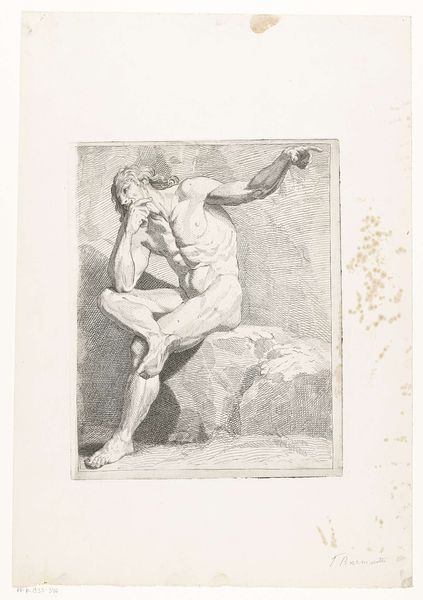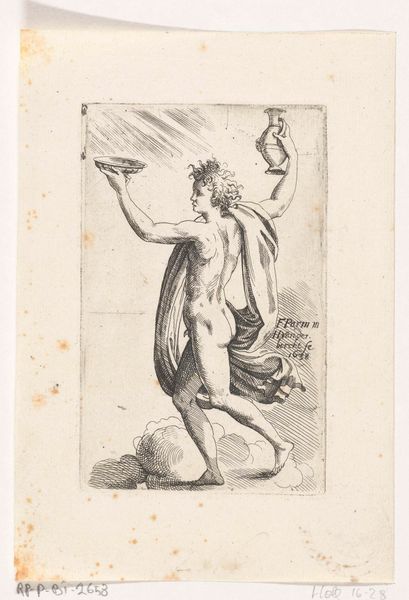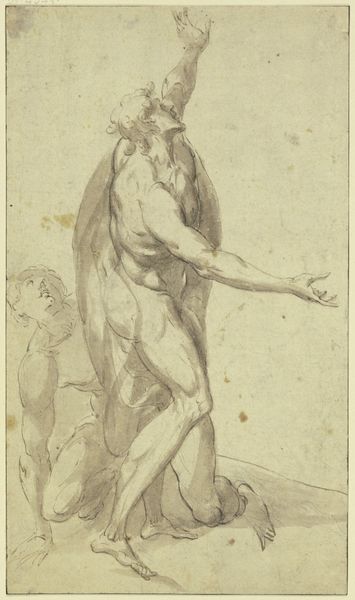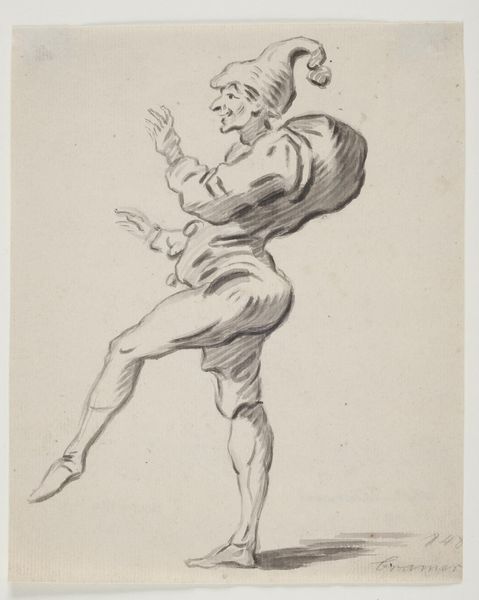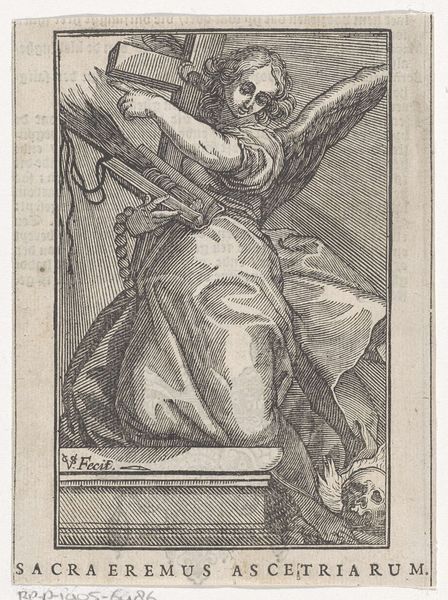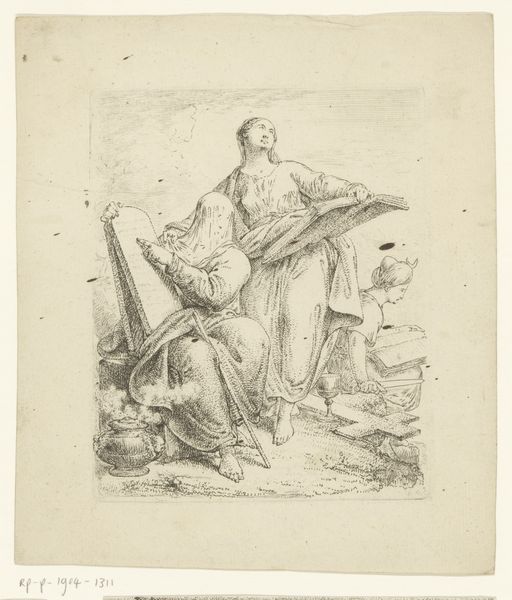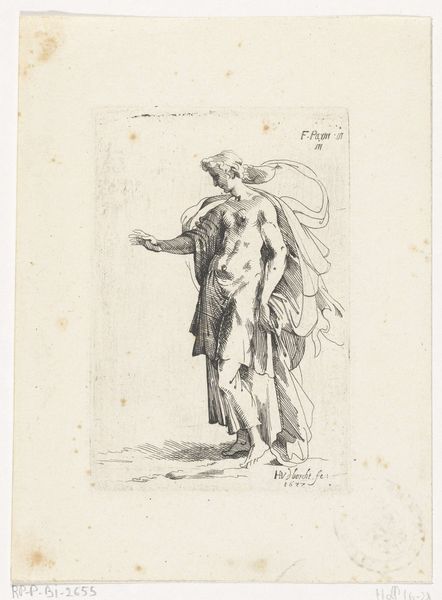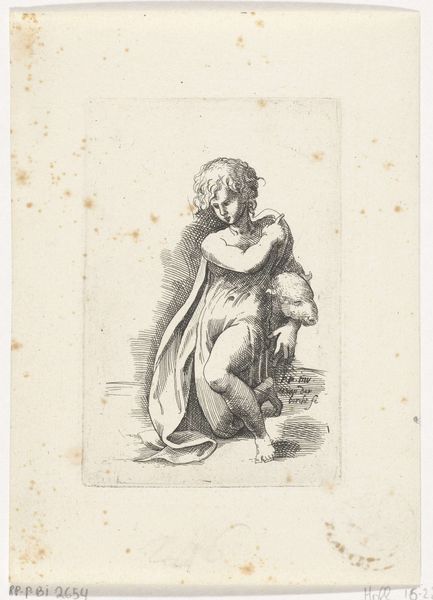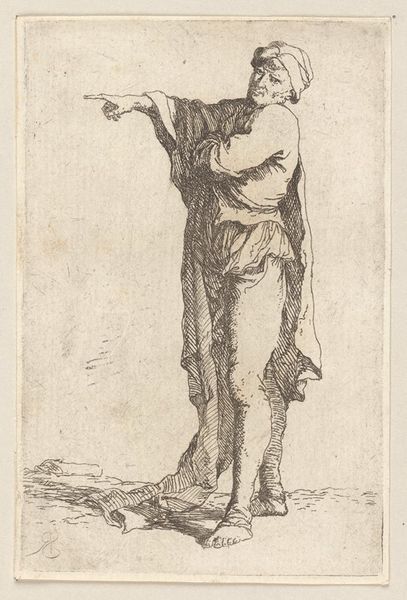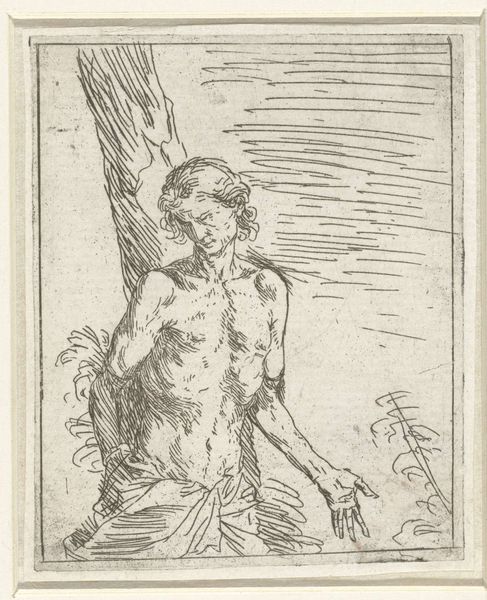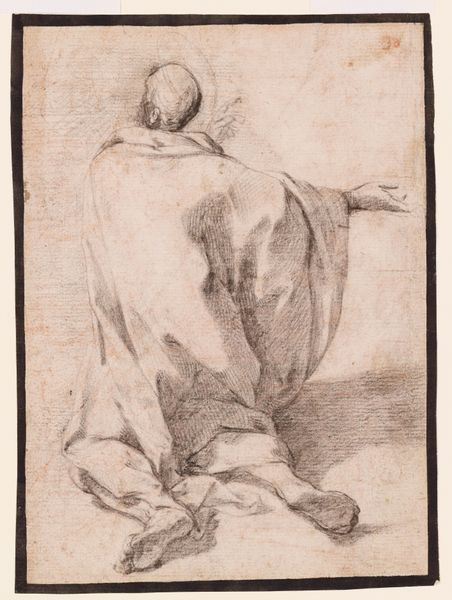
print, etching, engraving
#
baroque
# print
#
etching
#
landscape
#
figuration
#
history-painting
#
engraving
Dimensions: width 84 mm, height 130 mm
Copyright: Rijks Museum: Open Domain
Hendrik van der Borcht II created this etching, Knielende David, using metal and acid, sometime before 1676. Etching involves coating a metal plate with a waxy, acid-resistant substance, then scratching an image into that coating. When the plate is submerged in acid, the exposed metal is eaten away, creating lines that hold ink. In this print, the lines create tone and texture. Notice how they define the musculature of David’s back, and the folds of his clothing. The relative ease of etching, as compared to say, engraving, allowed for a greater freedom of line. The artist has used this to full advantage, creating a rich, detailed composition. Beyond its aesthetic qualities, the print medium also made art more democratic. Because they could be produced in multiples, etchings made images more widely available and affordable. This speaks to broader social issues of labor, politics, and consumption in the 17th century. Appreciating the materials, the process, and the context is essential to fully understanding this artwork.
Comments
No comments
Be the first to comment and join the conversation on the ultimate creative platform.
